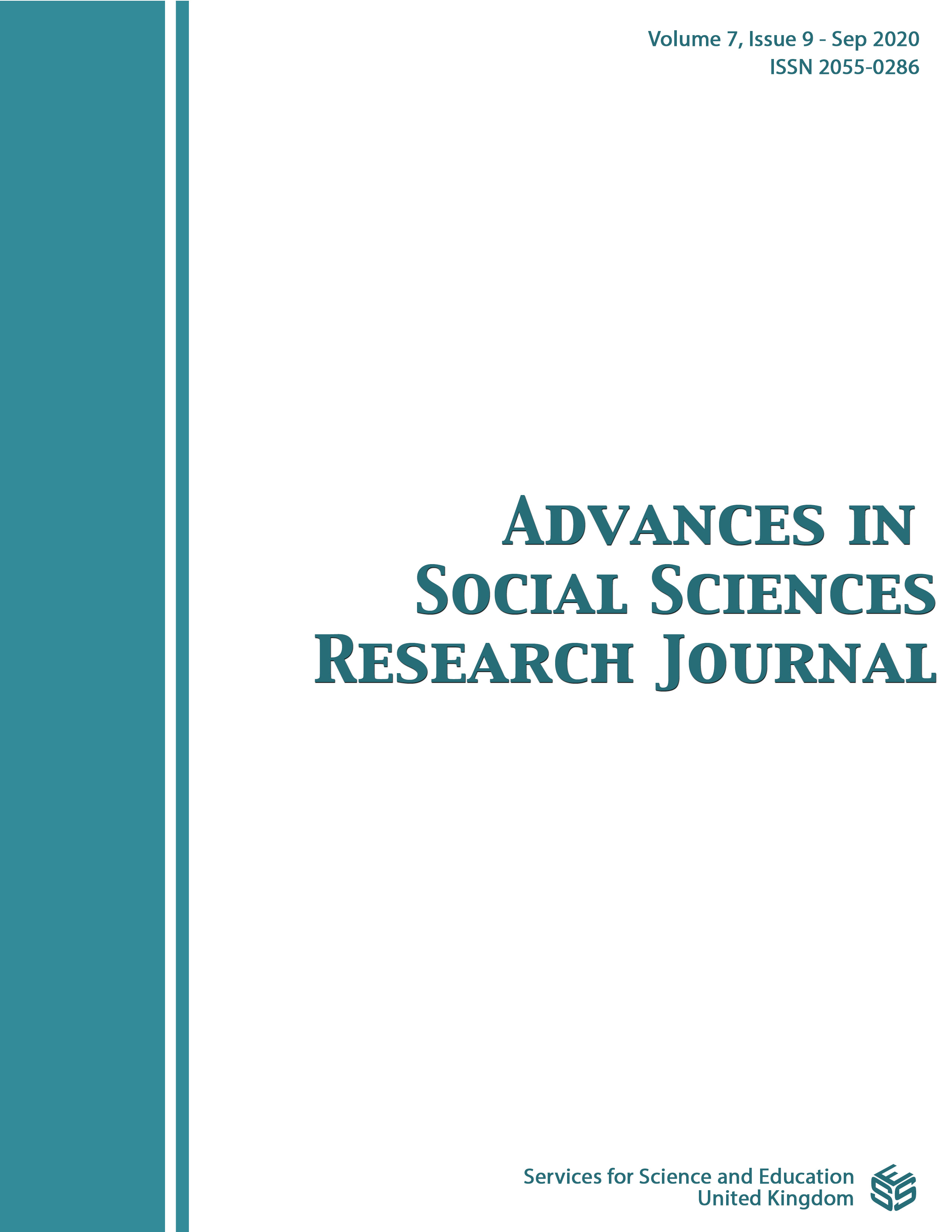SYSTEMATIC MAPPING OF PERFORMANCE ASSESSMENT RESEARCH: BIBLIOMETRIC STUDY WITH VOSVIEWER
DOI:
https://doi.org/10.14738/assrj.79.8984Keywords:
Public Service, VOSViewer, Systematic Mapping, Performance AssessmentAbstract
This article aims to find a map of the development of research on performance assessment. The study was conducted by searching through the Scopus database with the keyword performance assessment. The data from the search results are then analyzed descriptively based on the year of publication, the country that published the performance assessment research, and the focus of the research. To obtain a map of research development, the data from the Scopus database is exported into a Comma Separated Values (CSV) file format, then processed and analyzed using the VOSViewer application program to find out the bibliometric map of the development of performance assessment research.
The results of the systematic mapping conducted show that the trend of performance assessment research publications indexed in Scopus from 2011 to 2020 has fluctuated. The trend based on the country that published the most articles was the United Kingdom with 77 articles. The research topic that is mostly done is the study of performance measurement with 32 articles. Then, through VOSViewer visualization, it shows that the map of the development of performance assessment research is divided into 5 clusters, namely; Cluster 1 consists of 6 research topics, namely assessment, efficiency, evaluation, performance, public service, and sustainability; Cluster 2 consists of 5 research topics, namely balanced scorecard, benchmarking, data envelopment analysis, performance assessment, and performance indicators; Cluster 3 consists of 5 research topics, namely accountability, Canada, governance, performance measurement, and public management; Cluster 4 consists of 4 research topics, namely local government, performance management, public administration, and public sector reform; Cluster 5 consists of 3 research topics, namely job satisfaction, performance evaluation, and the public sector.
References
[2] M. A. Nuraini and L. Siswanta, “Pengaruh Gaya Kepemimpinan, Motivasi Kerja Dan Disiplin Kerja Terhadap Kinerja Karyawan Stikes Surya Global Yogyakarta,” J. Akunt. dan Manaj., 2014.
[3] F. Sudirjo and T. Kristanto, “Pengaruh Budaya Organisasi, Gaya Kepemimpinan dan Kepuasan Kerja Terhadap Kinerja Karyawan Dengan Komitmen Organisasional Sebagai Variabel Intervening (Studi Pada Rumah Sakit PT. VALE Soroaka, Sukawesi Selatan),” J. Ilm. UNTAG Semarang, 2015.
[4] K. R. Murphy, “Perspectives on the Relationship Between Job Performance and Ratings of Job Performance,” Ind. Organ. Psychol., 2008,.
[5] J. N. Cleveland, K. R. Murphy, and R. E. Williams, “Multiple Uses of Performance Appraisal: Prevalence and Correlates,” J. Appl. Psychol., 1989,.
[6] O. M. J. Adang, R. J. Kaminski, M. Q. Howell, and J. Mensink, “Assessing the performance of pepper spray in use-of-force encounters: The Dutch experience,” Policing, 2006,.
[7] B. Kitchenham and S. Charters, “Guidelines for performing Systematic Literature Reviews in Software Engineering,” Engineering, vol. 2, p. 1051, 2007,.
[8] J. F. Burnham, “Scopus database: A review,” Biomedical Digital Libraries. 2006,.
[9] B. S. Ballew, “Elsevier’s Scopus® database,” J. Electron. Resour. Med. Libr., 2009,.
[10] Elsevier B.V., “Scopus preview - Scopus - Welcome to Scopus,” Welcome to Scopus Preview, 2004. .
[11] S. H. Pattah, Pemanfaatan Kajian Bibliometrika sebagai Metode Evaluasi dan Kajian dalam Ilmu Perpustakaan dan Iinformasi. 2013.
[12] N. Mallig, “A relational database for bibliometric analysis,” J. Informetr., 2010,.
[13] P. Glenisson, W. Glänzel, F. Janssens, and B. De Moor, “Combining full text and bibliometric information in mapping scientific disciplines,” Inf. Process. Manag., 2005,.
[14] X. Chen, J. Chen, D. Wu, Y. Xie, and J. Li, “Mapping the Research Trends by Co-word Analysis Based on Keywords from Funded Project,” 2016,.
[15] V. Diodato, “The occurrence of title words in parts of research papers: Variations among disciplines,” Journal of Documentation. 1982,.
[16] M.-A. De Looze and J. Lemarie, “Corpus Relevance Through Co-Word Analysis :,” Scientometrics, 1997,.
[17] N. Coulter, I. Monarch, and S. Konda, “Software engineering as seen through its research literature: a study in co-word analysis,” J. Am. Soc. Inf. Sci., 1998,.
[18] N. J. van Eck and L. Waltman, “Software survey: VOSviewer, a computer program for bibliometric mapping,” Scientometrics, 2010,.
[19] N. J. van Eck and L. Waltman, “Visualizing Bibliometric Networks,” in Measuring Scholarly Impact, 2014.
[20] N. J. van Eck and L. Waltman, “Citation-based clustering of publications using CitNetExplorer and VOSviewer,” Scientometrics, 2017,.
[21] K. Petersen, R. Feldt, S. Mujtaba, and M. Mattsson, “Systematic mapping studies in software engineering,” EASE’08 Proc. 12th Int. Conf. Eval. Assess. Softw. Eng., pp. 68–77, 2008,.
[22] B. Kitchenham, “Procedures for performing systematic reviews,” Keele, UK, Keele Univ., vol. 33, no. TR/SE-0401, p. 28, 2004,.
[23] B. A. Kitchenham, “Kitchenham, B.: Guidelines for performing Systematic Literature Reviews in software engineering. EBSE Technical Report EBSE-2007-01,” 2007.
[24] B. Kitchenham, O. Pearl Brereton, D. Budgen, M. Turner, J. Bailey, and S. Linkman, “Systematic literature reviews in software engineering - A systematic literature review,” Information and Software Technology, vol. 51, no. 1. pp. 7–15, 2009,.
[25] B. Kitchenham, P. Brereton, Zhi Li, D. Budgen, and A. Burn, “Repeatability of systematic literature reviews,” 2011,.
[26] B. Kitchenham and P. Brereton, “A systematic review of systematic review process research in software engineering,” Information and Software Technology. 2013,.
[27] N. Banaeianjahromi and K. Smolander, “Understanding obstacles in Enterprise Architecture Development.,” in ECIS, 2016, p. ResearchPaper7.
[28] O. Barbosa and C. Alves, “A systematic mapping study on software ecosystems,” 2011.
[29] L. S. Musianto, “Perbedaan pendekatan kuantitatif dengan pendekatan kualitatif dalam metode penelitian,” J. Manag. dan Kewirausahaan, 2002.
[30] R. Wieringa, N. Maiden, N. Mead, and C. Rolland, “Requirements engineering paper classification and evaluation criteria: A proposal and a discussion,” Requir. Eng., vol. 11, no. 1, pp. 102–107, 2006,.
[31] R. J. Wieringa, Design science methodology: For information systems and software engineering. 2014.
Downloads
Published
How to Cite
Issue
Section
License
Authors wishing to include figures, tables, or text passages that have already been published elsewhere are required to obtain permission from the copyright owner(s) for both the print and online format and to include evidence that such permission has been granted when submitting their papers. Any material received without such evidence will be assumed to originate from the authors.






